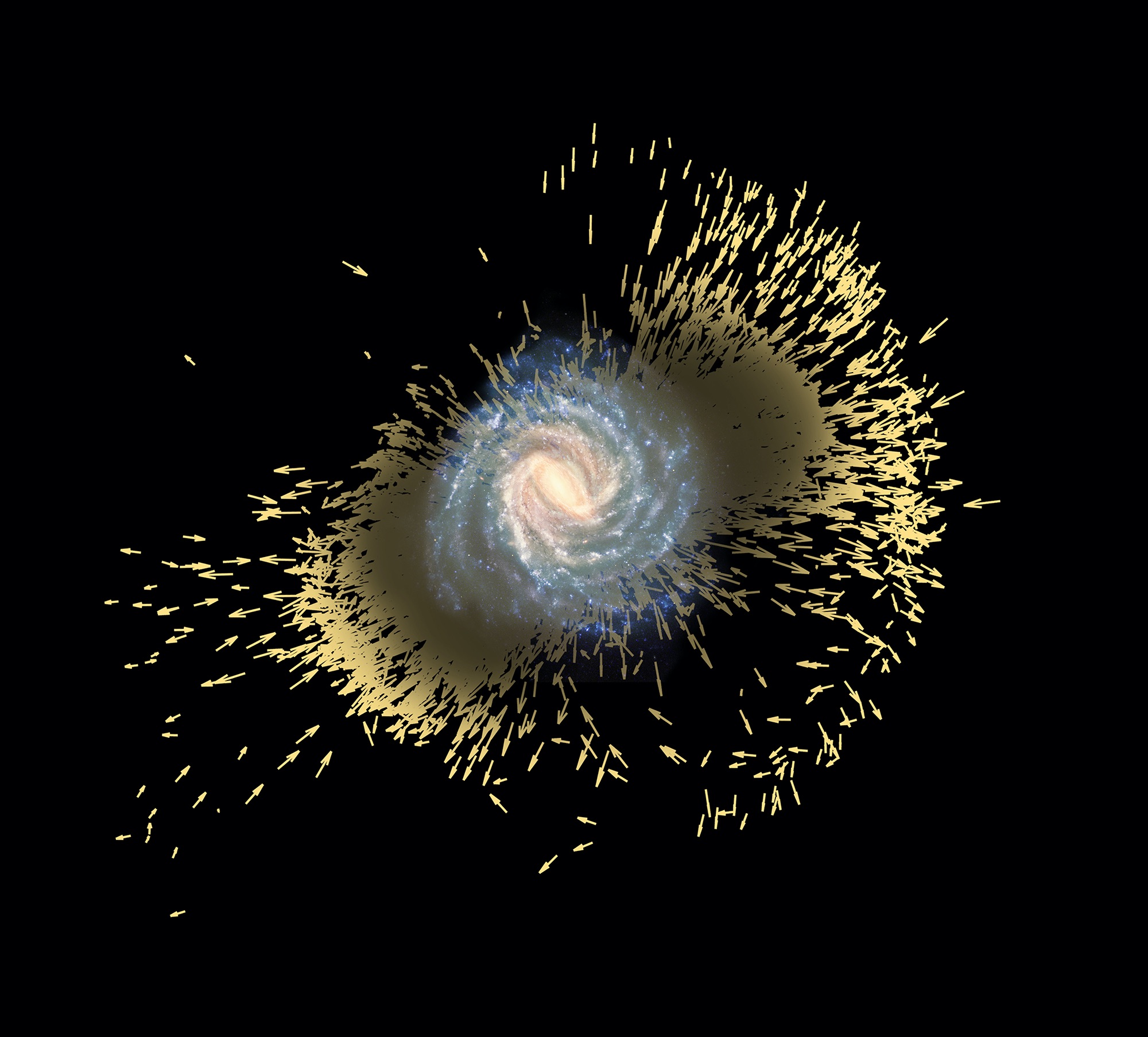How old is the Milky Way?
Our home galaxy contains up to 400 billion stars, and to cross it would take 200,000 years even at the speed of light. Such a huge object (which is rather average in cosmic comparison) does not come into being overnight. The Milky Way was actually born relatively early – at a time when the universe was still quite young. But when exactly, and how do you measure that?
Quite simply, if you want to know how old a forest is, you determine the age of its trees. The stars of the Milky Way do not have annual rings, but with increasing age they contain on average more and more heavy elements. While the first stars consisted only of hydrogen and helium, later more and more fusion products like lithium, carbon and oxygen up to iron are found. Astronomers speak of the metallicity of the stars, whereby as metal here everything is considered, which is not hydrogen or helium.
Of course, just looking at a few stars is not enough. To get a realistic picture of the evolution of the Milky Way, one must determine the metallicity of as many stars as possible. This is the task that astronomers Maosheng Xiang and Hans-Walter Rix have set themselves. To study the formation history of our galaxy, they used data from ESA’s Gaia Space Observatory and the Large Sky Area Multi-Object Fibre Spectroscopic Telescope in China to identify about 250,000 subgiant-phase stars covering a large spatial volume of the Milky Way.
The authors estimated the individual ages of these stars and found them to be between 1.5 billion and 13.8 billion years old. They then identified and characterized the origins of the various structural elements in the Milky Way’s disk and halo stellar populations. The results suggest that the formation of the thick disk began about 13 billion years ago, just 800 million years after the Big Bang. The authors calculate that the inner galactic halo – due to the merger of the Gaia-Enceladus galaxy with the old Milky Way – did not form until two billion years later. This probably coincides with the time when most of the stars in the thick disk were formed.
Stars in their subgiant phase of evolution provide a precise stellar clock because astronomers can directly and accurately measure their age during this short phase by their brightness. However, because of the short duration of this evolutionary phase, such observations are relatively rare, and large surveys have not been possible in the past.
